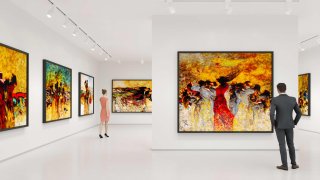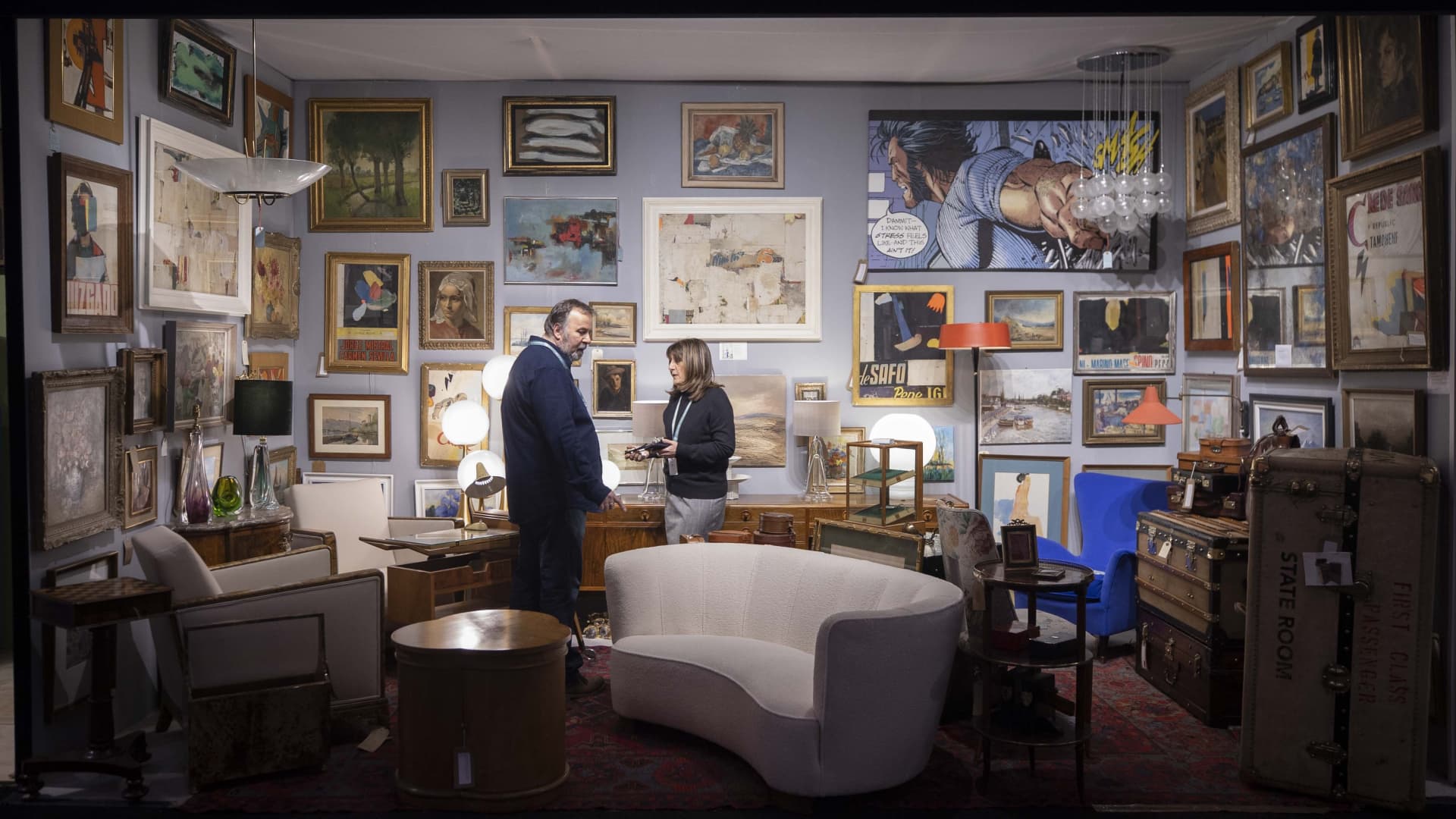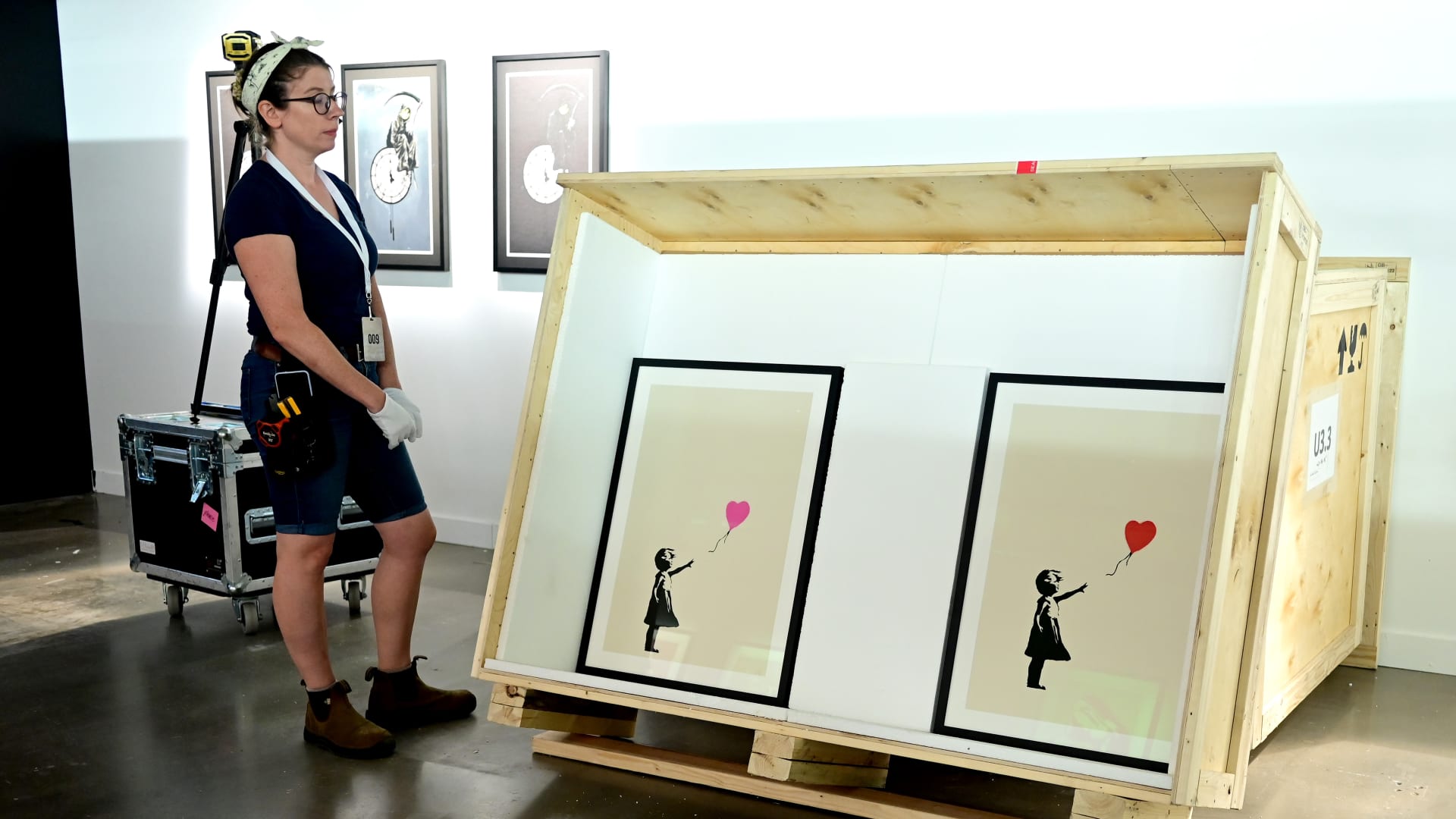
- "People want it, they aspire to it," art dealer Mark Lambert said of the motivations for buying art.
- Younger dealers CNBC spoke to had portfolio careers, working in interior design or being artists themselves.
- Clients may sell through a dealer to avoid public auctions, where a picture could "burn" if it doesn't reach its low estimate.
Art dealing often requires contacts — and the ability to take risks.
WATCH ANYTIME FOR FREE
>Stream NBC10 Boston news for free, 24/7, wherever you are. |
Mark Lambert has bought and sold works of art by the likes of Andy Warhol, Pablo Picasso and Claude Monet during his more than two-decade career as an art dealer, an occupation he got into almost by accident.
After a degree in fine art, Lambert imagined he would become an art teacher, but a chance meeting with an art dealer who hired him as an assistant set him on a different path. "I started as the framer and the tea boy … and I stayed there for 17 years," he told CNBC by phone.
Get updates on what's happening in Boston to your inbox. Sign up for our >News Headlines newsletter.
He specialized in 19th century Victorian paintings at the time, and would exhibit at around 20 international art and antiques fairs each year. Then, after a stint at another dealership, he opened his own gallery in September — Lambert Fine Art — in the British town of Stratford-upon-Avon.
Dealing in art is a trade Lambert described as "unusual," because art is often a purchase driven by emotion rather than need. "You don't need it. You don't have to have it. People want it, they aspire to it. From that regard, I suppose it's unusual. And I think most most people that buy art are investing in something for themselves ... they want to look at it and enjoy it every day," Lambert said.
Selling art via a dealer rather than at an auction can also help pieces maintain their value, Lambert said — if a picture doesn't achieve its low estimate at a public sale, it can reduce its perceived value and lessen demand. "You can 'burn' a picture by putting it to auction sometimes, if it doesn't sell properly or sell well," Lambert said.
Money Report
'The business needs new blood'
The world of art dealing can be intimidating to new entrants, according to Olya Johnson, an interior architect and co-founder of art and interiors business Relic, which she set up in 2023.
Relic exhibited at the prestigious Decorative Fair in London for the first time in January, an annual arts and antiques event Johnson said usually attracts longtime dealers, who may work in their family's firm.

Less experienced dealers may feel they need to wait years to be ready to display their pieces for sale at the fair, she said, but Relic was invited to share a stand with an established exhibitor. "Because we had this opportunity, but also [because] I think we're a little bit fearless, we said, well, why not try to do it now," Johnson said, adding that she found it an "incredibly positive experience."
"Everybody realizes that the business needs new blood and a new generation of people," Johnson said.
Along with buying and selling art and decorative objects, Relic lends pieces for editorial and advertising shoots to clients such as Elle Decoration magazine and the textile design company Colefax and Fowler.
Portfolio career
Both Johnson and her business partner Natalie Vosloo, a creative director in advertising, run Relic alongside their day jobs. "My experience with all the younger dealers that we know, it's always a second thing. So, dealing is always running in parallel to the primary career," Johnson said.
Two artists CNBC spoke to also deal in art.
Tom Rooth specializes in pencil drawing on ceramics and features animals and sea creatures in his work. A former director and fine art expert at upscale auction house Christie's, he is also a dealer of 19th and early 20th century paintings, buying on consignment or from auctions and selling to dealers and individuals.
Rooth's career as a dealer also helped him sell his ceramic pieces. At art fairs, he would use the plates he designed to hold sweets for people browsing the paintings at his stand. "People started making a beeline for them, asking how much they were," he told CNBC by phone, and his ceramics business took off.
Jack Roberts is also an artist and a dealer. "I've got lots of different identities within the art world," he told CNBC by phone. As an artist, he goes by the name JPR Stitch, and specializes in colorful embroidered pieces his customers display as wall art, making them on a regular sewing machine. Roberts has built a following on Instagram, which is often where clients — often in their 20s and 30s — find him, he said.
Alongside this, Roberts is a dealer and consultant, supplying galleries with art — which he loans in exchange for a fee, or on a sale or return basis. He has work by contemporary artists David Hockney, Jeff Koons and Damien Hirst in his current collection.
Risks of dealing art
The occupation can also be risky, because dealers often own multiple pieces of art without knowing when they will be sold, according to the dealers CNBC spoke to. Lambert may own around 70 to 100 artworks at one time (larger dealerships may have 1,000 pictures in stock, he said), while Roberts said dealers might own a "bread-and-butter" selection of artists that they know are likely to sell.

Dealers may also own pieces that see demand increase, Roberts said. "Occasionally you'll have the 'golden nugget' that comes along that you've either bought particularly well, or you bought and then the market has increased enormously for that piece," he said. Roberts said he has "a couple" of such pieces in his collection, but knowing when to sell them can be tricky.
Buying works by niche artists is also a strategy some dealers employ, Roberts said. "There might be a good profit in the piece, but it might be a very, very difficult piece to sell … finding a person or museum or collector to purchase that can take years and years," he said.
Earlier this year, Lambert acquired a limited edition print by British graffiti artist Banksy, whose original work has fetched millions of dollars at auction. But auction prices for the artist's prints can vary, Lambert has found, which may affect how much he can sell pieces for. "The market ... it's up or down, depending on who's got money on that day," Lambert said. "I thought it'd be a bit more straightforward, but the prices are all over the place for just one print," he added.






